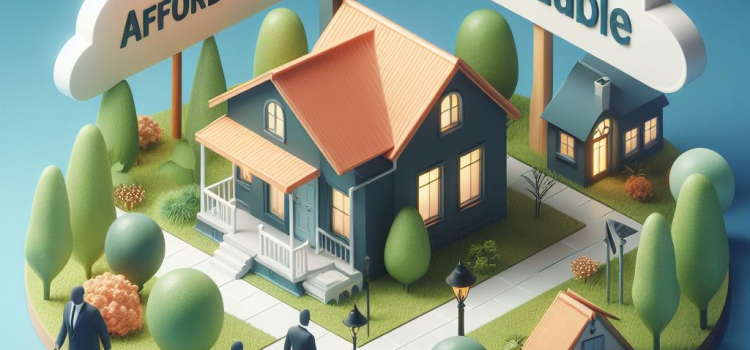
Introduction
Meet John Doe, a seasoned real estate expert with over a decade of experience in helping young professionals and recent graduates transition from renting to owning. John understands the unique challenges faced by this demographic and offers practical solutions tailored to their needs.
Understanding the Real Estate Market
The real estate market is influenced by a variety of factors, including economic conditions, interest rates, and supply and demand. For instance, during a seller’s market, there are more buyers than homes available, leading to higher home prices. Conversely, in a buyer’s market, there are more homes for sale than there are buyers, which can lead to lower home prices. Understanding these trends can help you determine the best time to buy a home.
Budgeting for Your First Home
Budgeting for your first home involves more than just considering the price of the house. You’ll also need to factor in additional costs such as closing costs, home insurance, property taxes, and maintenance costs. A common rule of thumb is that your monthly housing costs should not exceed 28% of your gross monthly income. This is known as the front-end ratio. There’s also the back-end ratio, which indicates that your total monthly debt payments (including housing costs, car loans, student loans, credit card payments, etc.) should not exceed 36% of your gross monthly income.
Exploring Financing Options
There are numerous financing options available to first-time homebuyers. These include:
- FHA loans: These loans, insured by the Federal Housing Administration, allow for lower down payments and have less stringent credit requirements than conventional loans.
- VA loans: If you’re a veteran or active-duty military member, you may qualify for a VA loan, which offers competitive interest rates and doesn’t require a down payment or private mortgage insurance.
- USDA loans: These loans are designed for rural homebuyers and offer 100% financing, meaning you won’t need to make a down payment.

The Home Buying Process
The home buying process involves several steps:
- Pre-approval: Before you start house hunting, get pre-approved for a mortgage. This will give you an idea of how much you can afford and show sellers that you’re serious about buying.
- House Hunting: Make a list of your needs and wants in a home, and work with a real estate agent to find homes that fit your criteria.
- Making an Offer: Once you’ve found a home you love, you’ll make an offer. If it’s accepted, you’ll move on to the next step.
- Home Inspection: A home inspection will reveal any potential issues with the home. You can use this information to negotiate repairs or a lower price.
- Closing: At closing, you’ll sign all the necessary paperwork, pay your down payment and closing costs, and receive the keys to your new home!
Maintaining Your Home
Home maintenance is a crucial part of homeownership. Regular maintenance can prevent small problems from turning into big, expensive ones. Some common home maintenance tasks include:
- Seasonal Maintenance: This includes tasks like cleaning gutters, sealing windows and doors, and servicing your HVAC system.
- Routine Inspections: Regularly inspect your roof, foundation, and plumbing to catch any potential issues early.
- Regular Cleaning: Keeping your home clean can prevent issues like mold and pests.
Case Study: Successful Homeownership
Let’s take a look at the journey of Alex, a recent graduate who successfully transitioned from renting to owning a budget-friendly home.
Understanding the Real Estate Market
Alex started by educating himself about the real estate market. He kept an eye on market trends, understanding the difference between a buyer’s and a seller’s market. He also familiarized himself with the real estate scenario in his desired location, which helped him identify the right time to buy.
Budgeting for the First Home
Alex knew that owning a home comes with several additional costs apart from the mortgage. So, he set a realistic budget considering his income, expenses, and future financial goals. He factored in costs like home insurance, property taxes, and maintenance into his budget.
Exploring Financing Options
As a first-time homebuyer, Alex explored various financing options. He researched different loan programs and even consulted with a mortgage advisor. After considering several factors, he decided that an FHA loan was the best fit for him due to its lower down payment requirement and flexible credit terms.
The Home Buying Process
Alex found a real estate agent who specialized in working with first-time homebuyers. With the agent’s help, he navigated the home buying process, from house hunting to making an offer and finally closing the deal. He also ensured to get a home inspection done to avoid any potential issues in the future.
Maintaining the Home
Once Alex moved into his new home, he understood the importance of regular home maintenance. He made sure to perform seasonal maintenance tasks and routine inspections to keep his home in good condition and prevent costly repairs.
Conclusion
Transitioning from renting to owning a home is a significant milestone, especially for young professionals and recent graduates. It requires a deep understanding of the real estate market, careful budgeting, exploration of various financing options, and a thorough understanding of the home buying process. Regular home maintenance is also crucial to protect your investment.
The journey may seem daunting, but with the right strategies and guidance, it’s certainly achievable. As illustrated in Alex’s case study, the dream of owning a budget-friendly home can indeed become a reality. Remember, the key lies in planning, research, and making informed decisions.
Whether you’re a recent graduate or a young professional transitioning from renting to owning, this guide provides a comprehensive roadmap to homeownership. It’s time to embark on your journey towards owning your dream home!










